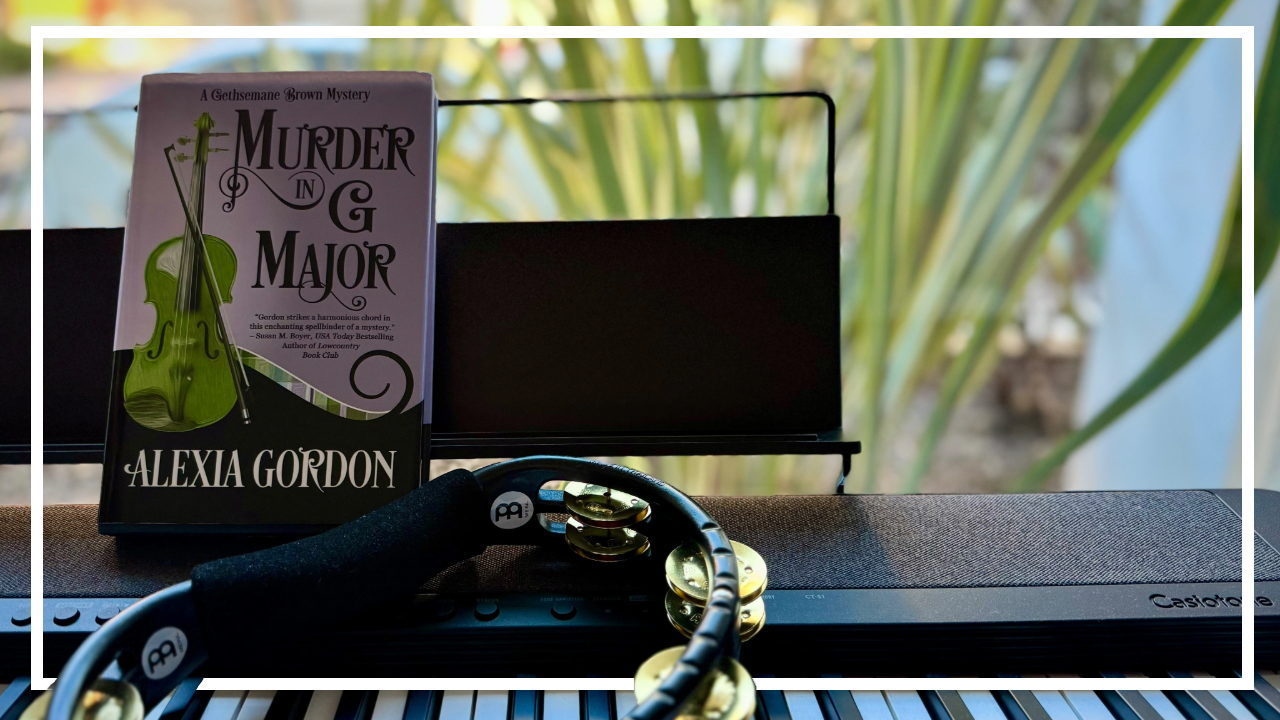It’s a bit of a leap from the past to the present in mystery novels, but this next entry should help bridge the gap.
Alexia Gordon’s Gethsemane Brown Mysteries have been popping up on my radar for a while, but I’ve been reluctant to engage. The series follows Gethsemane Brown, a violinist who finds herself in a small Irish hamlet, teaching the local school orchestra. She agrees to take care of a local cottage, only to find that it’s haunted – and by Eamon McCarthy, musician and composer extraordinaire. Before long, she’s embroiled in a crime that spans decades, an ocean away from her family and her former dreams…
There is a ton packed into this premise, many of which could veer either interesting or disappointing. There’s the fish-out-of-water story of settling into a new village, so common to this flavor of cozy. There’s the complexity of the paranormal world-building – which spans effective character writing and a semi-understandable magic system. And there’s, of course, the puzzle at the heart of the mystery – an element I continue to hope for in cozies. The story starts with Murder in G Major…
A classic cozy
Let’s start with the cozy elements, a bit more common and easier to evaluate. To some degree, the success of this mystery story relies on the community elements. That is, Gethsemane (and, by proxy, the reader) must care about the village, and about Eamon’s story. Without that connection, the entire story becomes a little pointless. And – of course – there’s the puzzle, because I always hope for a decent one even in the cozy genre.
The village itself is charming. Gethsemane experiences little racism there, and many of the villagers welcome her warmly; those that don’t tend to be those with something to hide. Over the course of theories, the orchestra also serves as a homely setting. It’s heartwarming, too, to see Gethsemane grow closer to the orchestra and its players. Brown goes for depth in character rather than breadth, and perhaps my only complaint is that the village doesn’t really contain as many of the normal livable shops and stores.
Then there’s Eamon. Your mileage will vary with this cantankerous ghost, based entirely on your patience for the kind yet cranky genius figure. I have a soft spot for this character trope, though I still found myself wishing he could get over himself. (Perhaps it’s because I self-identify as a hidden grump, and hold others to eating standards of courtesy as a result…)
…with notes of the paranormal
Then there are the more unique elements of the story – the music and the paranormal bits. Gethsemane is a classical musician, and you might expect to see that musical knowledge play at least some role in the story. And it does, but it’s mostly a plot element to shepherd along story beats, rather than a useful knowledge base from which to draw. These are stories about a musician, but they’re not musical mysteries. Instead, the music serves a place of community and connection, allowing Gethsemane to connect with her new home – and the ghost that inhabits it.
I will be fully honest, I was not expecting much worldbuilding from this series when I started. But Alexia Gordon has put some real thought into the rules of ghosts, and those rules start and stay reasonably consistent across multiple entires in the series. The ghosts are a critical part of Gethsemane’s problem-solving process, and they have very real (and physical) impacts on the plot. It’s a kind of fun urban fantasy-lite, and it makes me want more like it…
…and a solid mystery
Finally, there’s the puzzle to evaluate – how much does the mystery actually hold up?
There are certainly hints and clues throughout the book. Unlike the Abby Collette mysteries I’ve covered, these are “real” clues. As a reader , you can piece them together to solve the mystery, based on more than just character vibes and meta-text.
Not only that, though – we actually get to see Gethsemane put all the pieces together and explain them before her confrontation with the murderer. It’s clear that she’s got agency, that her thinking is being valorized, and not just a propensity for good (bad?) luck that allows her to stumble across the killer. After a year of cozies that mostly rely on action to solve the actual puzzle, it’s a nice change of pace.
Some additional thoughts
Despite this read being for Black Mystery Month, you will notice that I haven’t once brought up Gethsemane’s race. Despite being Black, Gethsemane’s race doesn’t play a huge role in these stories (though her identity as a Southern woman does). It’s an interesting twist, and one I’m… kind of OK with?
Overall, this has been a fun and cute little series, with surprisingly in-depth wordlbuilding. It’s one I binge-read quickly while I was into it, and I would certainly come back to it as a comfort read.
One last set of musicians to close out the month coming soon… Until then, stay cozy, and stay curious!
This will count for my 52 Book Club Challenge as “a book with a musical instrument on the cover”.
